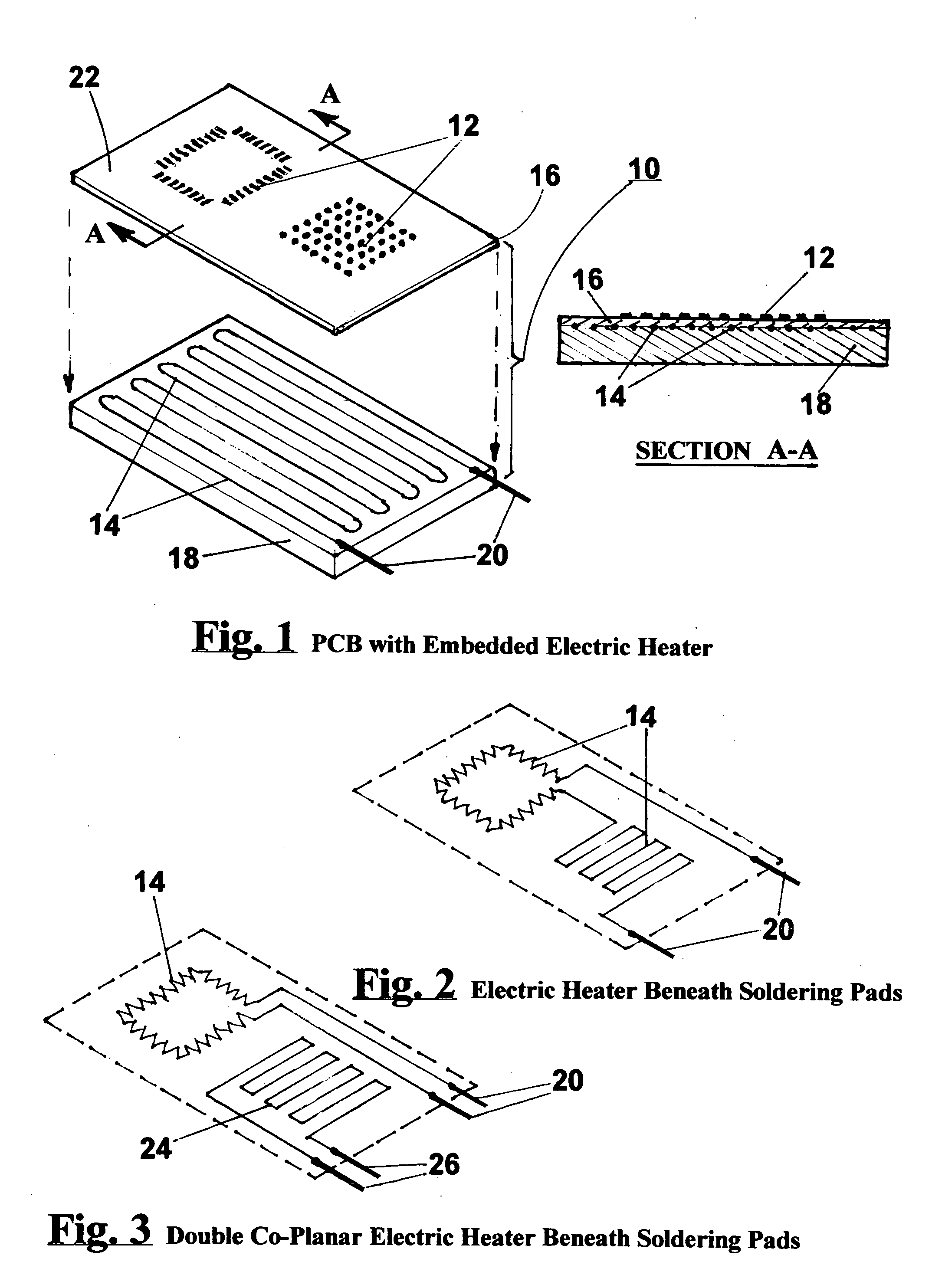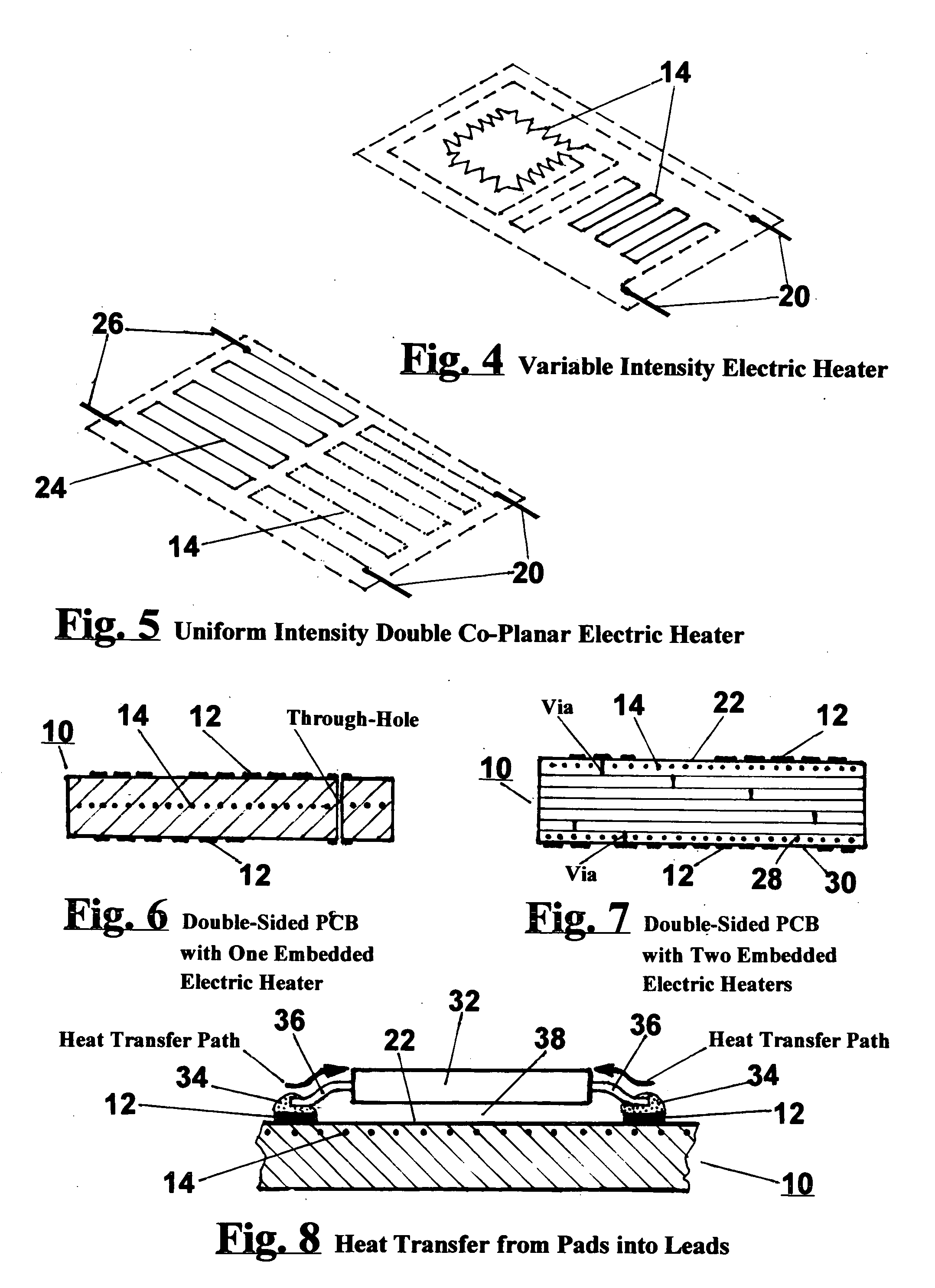Self-reflowing printed circuit board and application methods
a printed circuit board and self-reflow technology, applied in the field of new printed circuit boards, can solve the problems of requiring rework, increasing the cost of the final product, generating rejections, etc., and achieves the effects of reducing the cost of the manufactured product, reducing the temperature exposure, and being easy to integra
- Summary
- Abstract
- Description
- Claims
- Application Information
AI Technical Summary
Benefits of technology
Problems solved by technology
Method used
Image
Examples
Embodiment Construction
[0076] Now, aided by FIGS. 1 through 8, components that form part of the fundamental embodiment of this invention shall be illustrated and described. Because the additional embodiments that permit practical utilization of the fundamental embodiment of the invention also include items-of-commerce recognized as public-domain prior art, those preferred embodiments will be illustrated afterwards in FIG. 9 and FIG. 11 and described in the next part of this specification.
[0077]FIG. 1 shows in, both, exploded and sectional views the fundamental embodiment, namely a printed circuit board with embedded electric heater 10 (PCBwEEH 10) constructed according to this invention. To avoid clutter in the figure only two sets of soldering pads 12 are depicted, corresponding to the footprints of a QFP and a BGA packages. An electric heater 14 is embedded in a sandwich fashion between a top dielectric layer 16 and a bottom dielectric layer 18. Electric heater 14 has a pair of current supply leads 20-...
PUM
 Login to View More
Login to View More Abstract
Description
Claims
Application Information
 Login to View More
Login to View More - R&D
- Intellectual Property
- Life Sciences
- Materials
- Tech Scout
- Unparalleled Data Quality
- Higher Quality Content
- 60% Fewer Hallucinations
Browse by: Latest US Patents, China's latest patents, Technical Efficacy Thesaurus, Application Domain, Technology Topic, Popular Technical Reports.
© 2025 PatSnap. All rights reserved.Legal|Privacy policy|Modern Slavery Act Transparency Statement|Sitemap|About US| Contact US: help@patsnap.com



